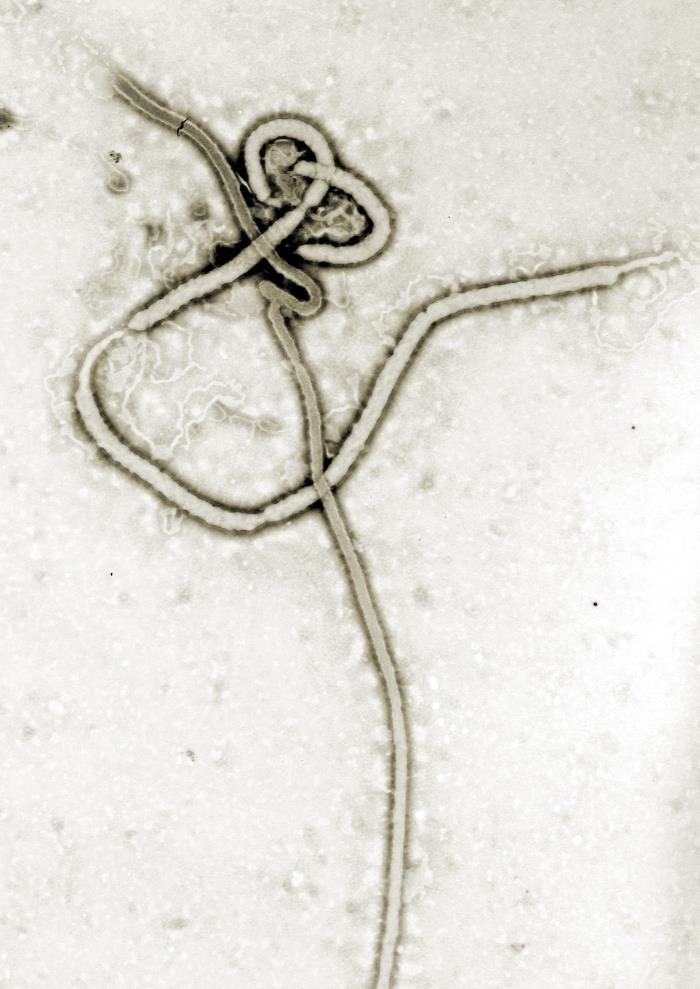Containing Ebola in a Shifting World
A conversation with Uganda’s outbreak commander as the African nation deals with the ramifications of the 2025 Sudan Ebola outbreak.
Published April 10, 2025
By Syra Madad, D.H.Sc., M.Sc., MCP, CHEP
Public Health Editor-at-Large

In a world confronted with a growing tide of infectious disease threats, the 2025 Sudan virus outbreak in Uganda serves as a stark reminder that epidemic intelligence must evolve from being reactive to anticipatory.
Increased human encroachment into wildlife habitats, and shifting global health funding landscapes, means that diseases like Ebola, once considered rare and geographically isolated, are emerging with greater frequency and unpredictability.
To better understand the shifting dynamics of this outbreak and its implications for the future of global health security, I spoke with Henry Kyobe Bosa, PhD, Uganda’s National Incident Commander for Epidemics. A distinguished public health leader, Colonel in the Uganda People’s Defense Forces, and seasoned epidemiologist, Dr. Kyobe has led responses to some of the most complex health emergencies in the region, including Uganda’s COVID-19 response and the current Sudan Ebola outbreak.
In this timely and sobering conversation, Dr. Kyobe shares firsthand insights into the evolving trajectory of this year’s Ebola outbreak, the innovations and tools Uganda is using to contain it, and the global lessons we must heed. Dr. Kyobe’s remarks have been lightly edited for clarity and length.
As Uganda’s National Ebola Incident Commander, can you walk us through the current state of the Sudan virus outbreak from its initial detection to the most urgent challenges your response teams are facing today?
The 2025 Sudan virus outbreak in Uganda is a unique phenomenon. Unlike all previous outbreaks (n=7), this one was first identified in the capital, Kampala, a metropolitan city of over 6 million inhabitants, with complex transnational and national travel routes. This created initial challenges, as the index case, a 34-year-old male nurse working in a children’s ward at the national referral hospital, was diagnosed with Ebola only after death.
Prior to his passing, he had seeded two clusters: an extended family cluster (involving his mother, brother, son, and housemaid), and a hospital cluster (three healthcare workers from a private facility where he had sought care).
Since then, another cluster, again a family cluster has emerged. Apart from a temporal relationship that suggests either a point source or common source transmission, there is no epidemiological link between the two transmission chains.
These two chains, though involving relatively few cases, quickly spread to three of Uganda’s ten cities, spanning from the eastern district of Mbale to the western district of Ntoroko, with contacts identified in over 15 districts. This early spread posed a significant threat of rapid outbreak expansion.
This all occurred amid an ongoing mpox outbreak, Uganda is currently the second most burdened country for mpox globally and at a time when the U.S. was revising funding support to many health systems in the country, some of which play complementary roles in Ebola response.
As of now, it has been over 10 days since the last confirmed case tested negative for Sudan virus and was discharged. The overall response infrastructure remains in place and will continue until after 42 days (two incubation cycles) before transitioning to another phase of optimum control. We are keenly monitoring and looking forward to this milestone.
Given that this is Uganda’s sixth outbreak of Sudan virus since 2000, what have these recurrent episodes taught us about the nature of Ebola and its persistence in animal reservoirs? Are these outbreaks becoming more frequent or harder to contain and if so, why?
The 2000 Sudan virus outbreak remains the largest in Uganda and the third largest Ebola virus outbreak globally. Since then, successive outbreaks have occurred in different regions of Uganda. Notably, no two successive outbreaks have originated from the same location, not even this one.
As with previous outbreaks, the natural reservoir of Sudan virus, the possible presence of transient hosts, and the mechanisms of spillover remain elusive. What is clear so far is that the virus continues to resurface under unpredictable conditions.
Many people associate Ebola with terrifying headlines from past outbreaks. For someone reading this from New York or Los Angeles, why should they care about an Ebola outbreak happening thousands of miles away in Uganda?
Ebola is a highly infectious disease with high mortality among those infected. We saw this in the 1970s and more recently, 11 years ago in West Africa, where over 11,000 people died in three countries in just two years, with nearly 24,000 total cases. The outbreaks also devastated the economies of those countries.
Any suboptimal response to Ebola anywhere is a threat to global health security. It increases the likelihood of disruptions to international trade and travel.
The negative impacts of Ebola have not changed much since the virus was first identified 50 years ago. What has changed, however, with successive outbreaks, is the growing efficiency of outbreak response. While traditional tools like contact tracing, quarantine, and movement restrictions remain important, new advancements have helped us slow transmission and reduce outbreak size. For instance, in this current outbreak, the rVSV ring vaccination trial was launched just four days after the outbreak was declared.
While there are currently no Ebola cases outside of Uganda, what should healthcare systems in the United States be doing right now to prepare for potential importation of cases? What’s your message to frontline clinicians and emergency managers across the U.S.?
The risk of cross-border transmission beyond Uganda is currently remote. We have identified all known contacts, placed them in institutional quarantine, and added them to no-fly lists in accordance with International Health Regulations guidelines to protect other countries.
That said, individuals presenting with persistent febrile illness, with or without hemorrhagic manifestations and recent travel from Africa should be evaluated for possible viral hemorrhagic fevers, not just Sudan virus.
As someone who led Uganda’s response to both COVID-19 and now this Ebola outbreak, what do you believe are the core lessons we must carry forward to build resilient, community-trusted public health systems both in Africa and globally?
For a long time, we’ve relied on traditional public health tools. They’ve been effective, but also costly for populations and often associated with prolonged outbreaks. We must increasingly rely on newer and more effective tools.
Today, we can use cellphone data to collect temporal geospatial information to understand individuals’ movements and interactions and identify contacts.
In this outbreak, we deployed remdesivir in real-time because we had a balanced stock from the 2022 outbreak, effectively a stockpile. We probably would not have saved all 10 patients who arrived alive at treatment centers without this stock. Stockpiling essential commodities is critical.
Modernizing surveillance systems and ensuring they are appropriately linked to effective laboratory networks is critical. In the current outbreak, an existing mortality surveillance system detected the outbreak just in time, as it had already spread to three cities and several districts. This early detection was timely; had we missed this case, the outbreak could have grown exponentially.
There’s a lot of mistrust in public health around the world right now, especially after COVID. How are you working with communities in Uganda to build trust, fight misinformation, and encourage people to seek care early?
Misinformation takes many forms. The most valuable asset a public health worker can have is the trust of the community they serve.
The best way to maintain that trust is to be reliable.
We must be truthful, reliable, and consistent even when evidence changes in the face of new information. Our public health predecessors succeeded because they remained honest.
To fight misinformation, we must get ahead of the curve and provide correct information in real time. Only then can we progressively rebuild public trust.
What does success look like to you in this outbreak response, not just in stopping the virus, but in what we build afterward?
Success means being able to document best practices from this outbreak and learning from the mistakes of the past.
Want to be part of an impactful network of scientists across the globe? Join the Academy’s International Science Reserve.
Stay Connected with Dr. Madad:
Instagram
Twitter/X
LinkedIn
Facebook
